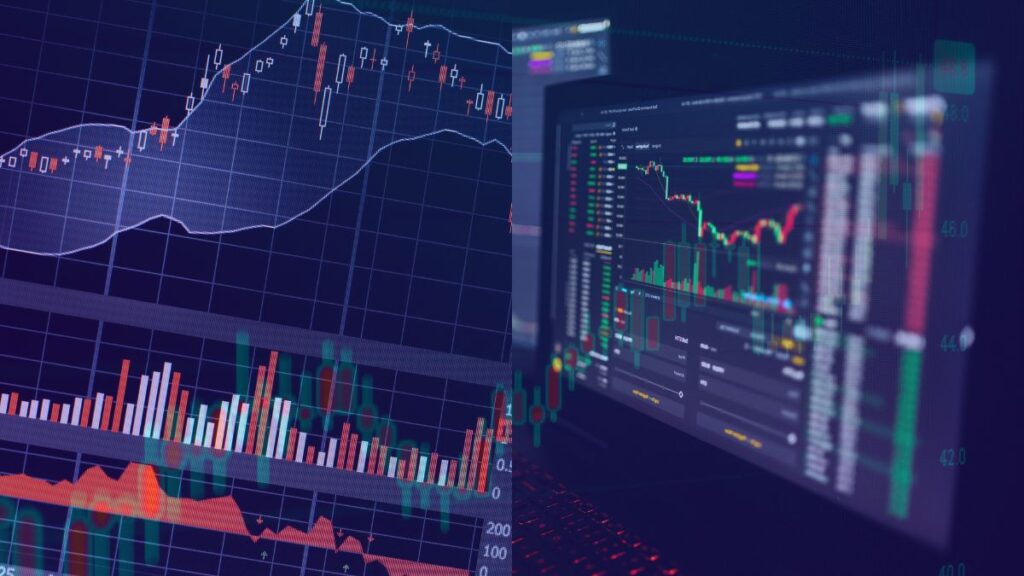What is Cryptocurrency?
For people that don’t know what cryptocurrency is, it is a digital asset that may be exchanged without the need for a central monetary authority, such as a government or bank. Cryptocurrencies are created using cryptographic techniques that let users purchase, sell, or exchange them securely.
What is Cryptocurrency Trading?
Cryptocurrency trading happens when you buy or sell these digital currencies with the aim of making a profit from the changing value of the underlying asset.
What are the Steps?
There are lots of different ways of making money from cryptocurrency. Trading is one of the most popular. Before you begin, you should research to determine whether crypto trading is the right choice for you. Prices can be quite volatile, which implies that either a huge profit or a huge loss is possible. Once you’ve decided it’s suitable for you, you can trade long-term or short-term. Are you looking to trade or become a holder? If you want to trade cryptocurrency, you must first determine the best trading strategy for you and then study the charts. Because cryptocurrency is highly speculative, news can significantly impact the price compared to the charts.
How To Start Cryptocurrency Trading?
There are several ways to start with cryptocurrency trading. You can either open an account with a crypto exchange and trade using the Centralized Exchange (CEX). There are many CEX to choose from. Coinbase, Binance, Huobi, and Kucoin are some popular cryptocurrency exchanges. However, if you already hold cryptocurrency, you may begin trading by using a Decentralized Exchange (DEX), such as Uniswap, 1inch, or PancakeSwap. If you prefer to trade on a CEX, you may also transfer your cryptocurrency there. Another way you can do this is by applying for a funded trading account. Some recommended prop firm that supports crypto trading is FundYourFX, Surge Trader, and Blue Guardian Capital. There are plenty of others that offer cryptocurrency trading.
Why Trade Crypto?
There are several advantages of trading cryptocurrency.
Volatility
Although the cryptocurrency market is still in its early stages, it has seen substantial volatility as a result of massive short-term speculative interest. Crypto is a famously volatile currency market, one that even specialists are caught off guard on a regular basis. Cryptocurrency volatility is part of what makes this market so exciting. Rapid intraday price changes can present traders with a variety of opportunities to go long and short, but they also come with increased risk. For example, Bitcoin’s annualized volatility rate was 81 percent, and investors might expect a daily movement of 4 percent on average. If you decide to venture into the cryptocurrency market, make sure you have done your research and prepared a risk management strategy.
24 Hours Market
Yes, cryptocurrency markets are always open: they operate around the clock, 365 days a year. This is because, unlike stocks and commodities, the crypto market is a decentralized network of computers rather than a controlled exchange. However, downtime may occur while the market adjusts to infrastructure modifications or ‘forks.’
Liquidity
The liquidity of a cryptocurrency refers to how fast and readily it may be changed into cash without affecting the market price. Liquidity is vital because it allows for better pricing, shorter transaction speeds, and greater technical analysis accuracy. In general, the cryptocurrency market is considered illiquid since transactions are scattered over numerous exchanges. This results in very minor trades having a large influence on market prices. This contributes to the volatility of cryptocurrency markets. Bitcoin is widely regarded as the world’s first and most frequently traded digital asset and the most liquid virtual currency. Bitcoin trading volumes are now comfortably in the tens of billions daily and have expanded significantly since 2014.
Leverage
Leverage in cryptocurrency trading refers to using borrowed funds to make trades. Trading using leverage can increase your buying or selling power, allowing you to trade greater quantities. As a result, even if your initial capital is tiny, you may use it as collateral in leveraged trades. The profit or loss you make from your cryptocurrency trades will represent the entire value of the position at the time it closes. Therefore, margin trading allows you to generate higher returns from a modest investment. It can, however, exacerbate any losses, including losses that could exceed your initial investment for a single transaction.
For example, suppose a cryptocurrency CFD has a leverage ratio of 1:2 and the market moves 5%. In that case, the CFD trader will really make a 10% profit (or a loss of 10 percent depending on the direction of the price movement and the type of position the trader has selected). This is why, before trading CFDs, it is critical to assess the overall value of the leveraged position. It is also essential to have a proper risk management plan in place, which should include appropriate stops and limits.
In Conclusion
Regardless of how you slice it, cryptocurrency is a somewhat risky investment. Risk management is an essential component of trading. Before you start a crypto trade, you should determine how much you are willing to lose if it goes against you.
Furthermore, trading techniques can vary greatly from person to person, depending on preferences, personalities, trading money, risk tolerance, and so on. Trading involves a great deal of responsibility.
The most essential thing to remember when investing in anything is to always do your research.






